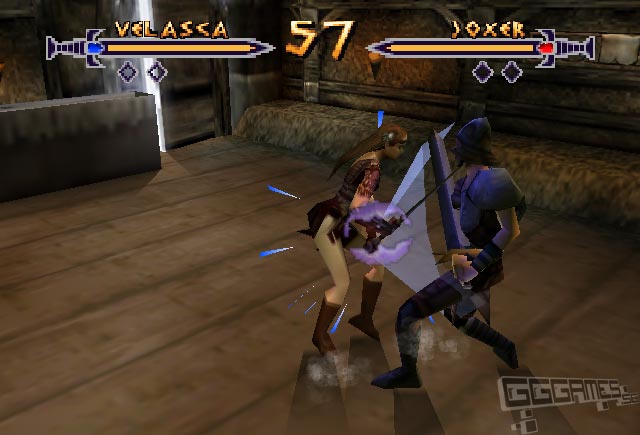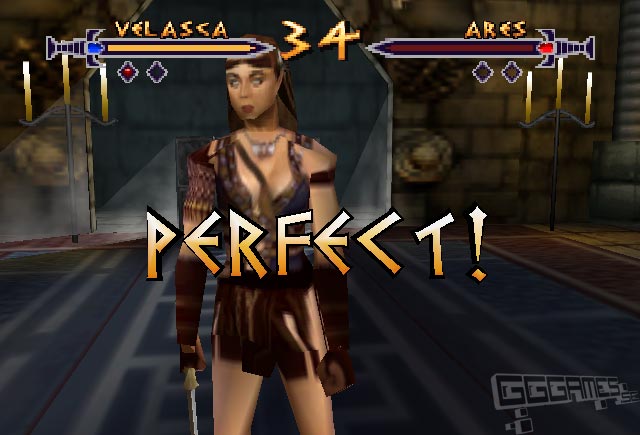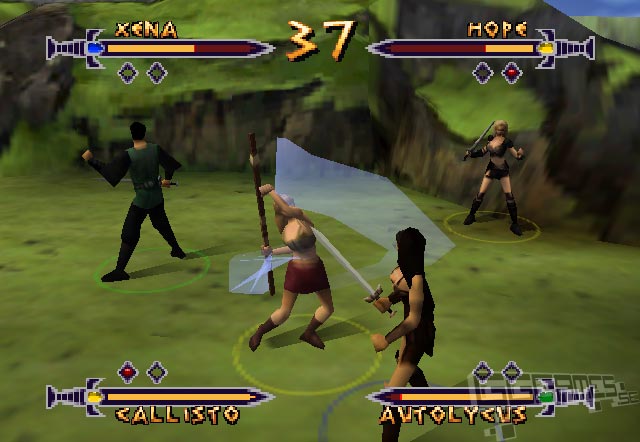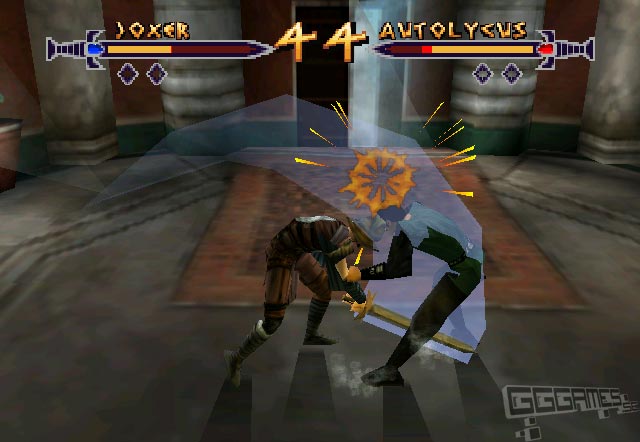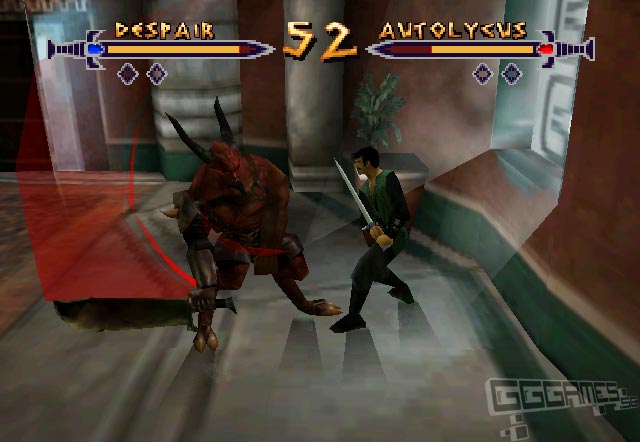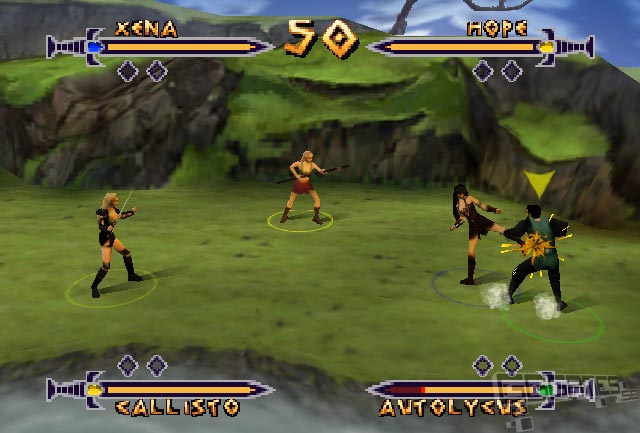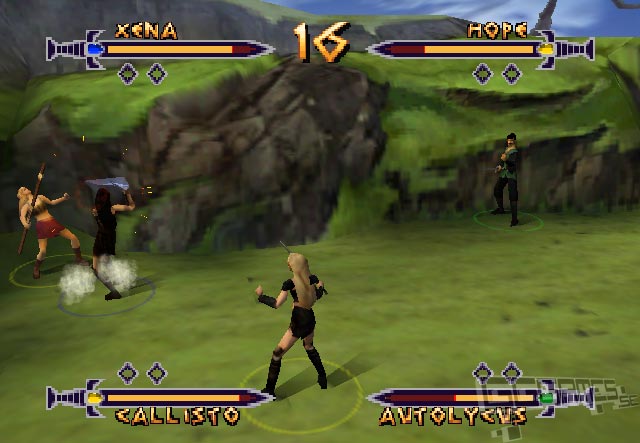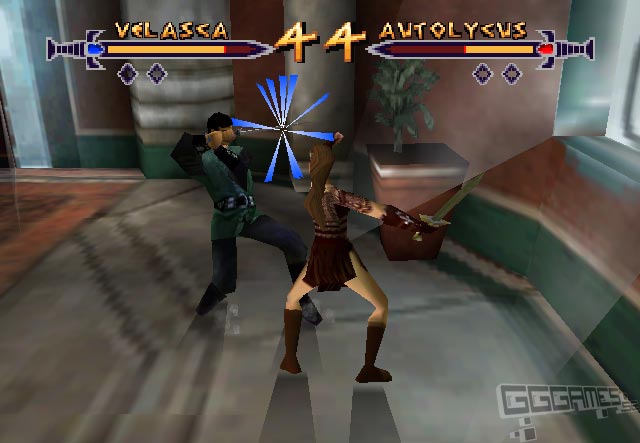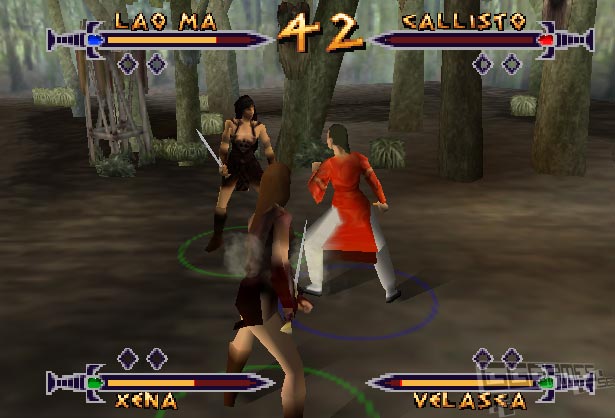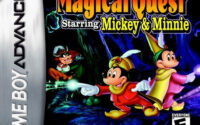Xena: Warrior Princess: The Talisman of Fate Review
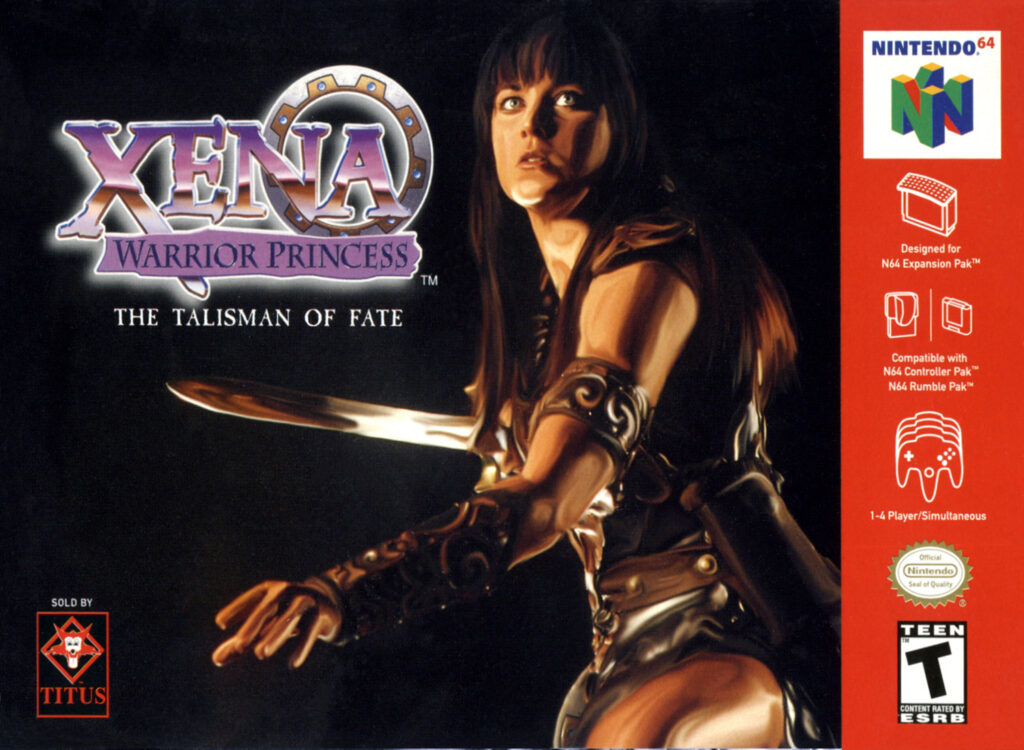
Four player 3D arena fighting in the world of Xena: Warrior Princess.
Story
It is said that the one who has The Talisman of Fate will have control over the destiny of the world. Both Xena and Despair the champion of Dahak sought to claim it – and it came to pass that in the middle of the heated battle between the two, they both put their hands on the talisman at the same time. The fates declared that a contest will decide whoever is the rightful owner of the talisman. The best fighters of the world will battle for the talisman in the contest and face Despair. Only then will the fates accept the new owner of the talisman.
The Game
Xena: Warrior Princess: The Talisman of Fate is a 3D fighting game featuring ten characters from the TV series “Xena: Warrior Princess”. This release is a Nintendo 64 exclusive title, and it has support for up to four players.
Unlike many other 3D fighting games, this game allows characters to move freely in any direction of the stage. This makes it feel much more like an arena fighting game than the regular toe-to-toe fighting. There is also some magic and dirty tricks in the mix such as throwing knives and hurling fireballs.
Controls
This is a pick-up-and-play button mashing game. It has got combos, special moves, juggling combos quite like that you’d see in a quality production arcade fighting game. It doesn’t have very much depth to it though. The fighting feels pretty flat because of how the controls work and that there are hardly any distinct moves – much of it looks the same. The controls are responsive, but even so it feels clunky somehow. Perhaps this is because most attacks automatically forces movement of your character in some direction (typically forward). Or perhaps it is because many times attacks look like they should have connected with your opponent but doesn’t. On top of this there are clearly issues with how attack priorities work – it’s hard to describe, but it seems that if you’re lucky you can interrupt your opponent’s attacks by simply timing your swings and standing at the right distance. The CPU opponents use this technique quite frequently against you, so this is more an annoyance than anything else.
Content
One of the most important things in a fighting game is the roster of playable characters. These are the playable characters in this game;
- Xena – Warrior Princess
- Gabrielle – Warrior bard
- Autolycus – Son of Hermes
- Joxer – Wannabe Warrior
- Caesar – Ruler of Rome
- Ares – The Olympian god of war
- Velasca – Amazon goddess
- Callisto – Warrior goddess
- Ephiny – Amazon
- Despair – The champion of Dahak
The selection of playable characters is appropriate for the franchise, but you can’t help wondering if they couldn’t have included some more interesting characters. All characters, except Despair are humanoid and they all use a weapon of some sort. They’re all equally agile and strong in battle. As always, there are some cheap moves here and there but basically the different characters doesn’t feel very different at all, save for the few special attacks they know.
Despair appears as the last boss of the game, and he isn’t as playable from the start. He must be unlocked and he is a very overpowered boss character. There are some unlocks, or secret codes rather, in this game. You can make characters heads grow big and stuff like that – it’s basically just for “fun” and not worth the trouble.
This game can be played in four different game modes. The Quest mode is the standard single-player arcade story mode where you face off the warriors of the world in order to claim The Talisman of Fate. Each character has its own short story sequence at the end of the game, so if you’re serious about Xena: Warrior Princess lore, you’ll find it quite amusing to see the different characters take on ruling destiny. It’s just too bad that the story is kind of shallow and the end sequences are very brief – don’t expect any surprises.
The VS mode is where you’ll go if you want to fight one-on-one, two-on-two or three-on-one battles. VS mode supports four players simultaneously on one battle field and you can mix teams however you want, and even fight with or against CPU controlled opponents. There is ten different arenas to play on, but they’re all basically just different back drops.
Roster mode is a special “last man standing”-type mode where you also can play with four players, but each player controls a team of warriors consisting of two to four characters. When one character is knocked out, the next one joins in the battle. This mode can also be played in teams just like the VS mode. This allows for some mad and long battles where basically anything can happen – great fun in multiplayer.
Last but not least is the Practice mode where you can play with infinite time and health, practicing moves. You can practice with four players simultaneously and even practice against CPU controlled dummies. This is a fully featured practice mode where you’ll see each players inputs on the screen color coded.
The options screen will allow you to adjust the difficulty of the game. There are three different difficulty levels. If you choose to play on the hard difficulty, you will face two or even three opponents at the same time in the Quest mode. Other options you can adjust are round length and the number of rounds in a battle. You can also adjust controller settings, save and load settings, and check high score tables. The game supports high score tables for each difficulty setting, which is nice.
Sadly, the CPU controlled opponents aren’t very well done. This is most notable in the fight against Despair, where you can use the same combo over and over again and it always lands. Even the CPU uses only a few attack patterns and alternates between them. If you play this game for a few hours you’ll start seeing patterns in how it works. Even though it can be hard to use this to your advantage, it certainly ruins much of fun in the game.
In Xena: Warrior Princess: The Talisman of Fate you’ll fight in various environments like forests, castles, castle yards, villages, wilderness and temples. As mentioned above, the different stages you fight in are just back drops – nice variation but nothing more. They do vary in size though, but that is only a minor difference in this game because you can always escape from being cornered by doing a wall jump, and you can’t be knocked out-of-bounds.
Graphics
The graphics are okay for the most part. The character models could have had some more detail, and the animations are looking pretty jerky and awkward most of the time. Seeing four warriors battle it out on one screen is pretty amazing and chaotic though, despite the flawed animations. The stages look pretty good and they certainly capture the feeling of the environment. The lighting effects do their job too.
Sound
The music is has a mythical and dramatic sound – pretty appropriate for the setting and the Xena: Warrior Princess theme. Even though the music is relatively well done, it’s missing one or more songs that stick out and are truly enjoyable to listen to.
There is a fair deal of voice acting in this game, mostly grunts and moans during battle and announcer voices. These and the rest of the sounds definitely gets the job done, but there’s a risk that you will want to turn the volume down after playing a while.
Summary
Xena: Warrior Princess: The Talisman of Fate as a one-on-one fighting game can’t compare with real and serious fighting games (such as Virtua Fighter and Street Fighter). Instead, this game turns out to be a rather shallow button masher with bland characters and tiring game play. With three or four players the game is a much better use of your time, but even then the overall experience is pretty underdeveloped. The battles quickly become chaotic and hard to follow, and that’s part of the fun.
Don’t expect to be entertained by this game for more than an hour. Ten playable characters might sound like there’s enough to go around but the fact of the matter is that they all play virtually the same.
